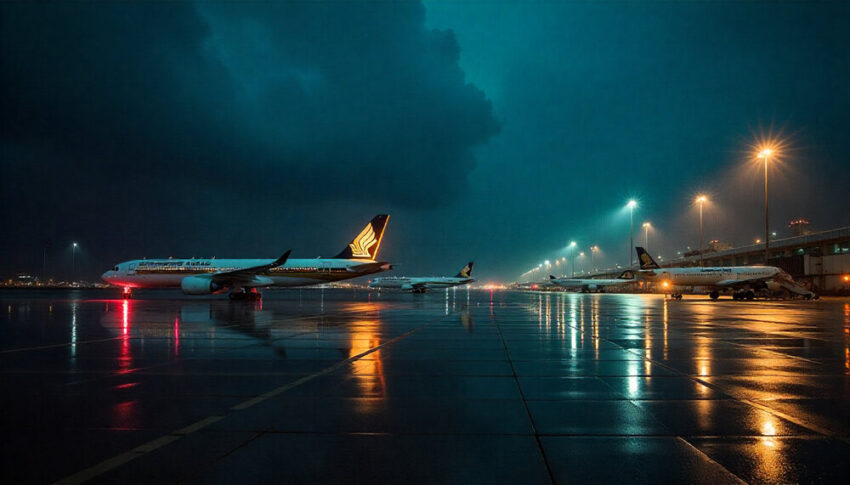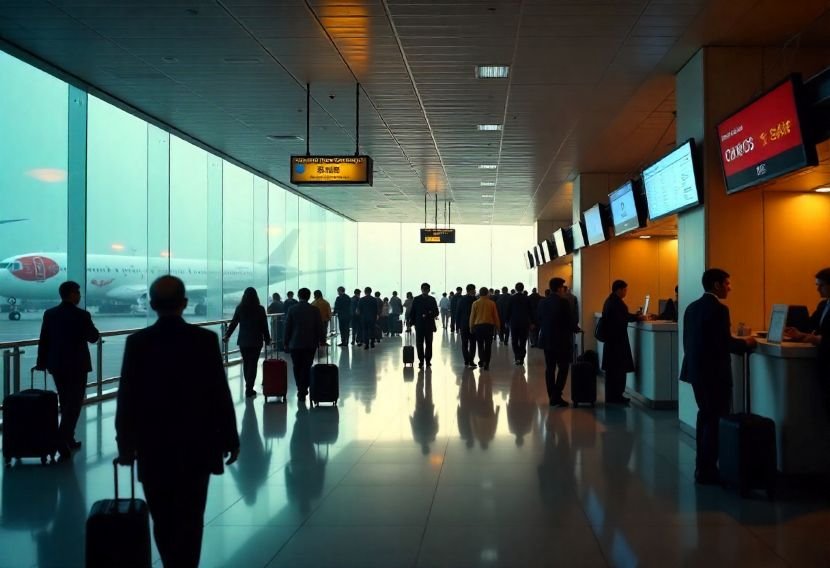Monday, July 21, 2025

Hong Kong is bracing itself as 24 million people in China are warned that Super Typhoon Wipha, the largest storm on earth so far this year, could be on its way. Cyclone Wipha, a record-breaking super typhoon, has slammed into Japan and is now moving towards southern China, including Hong Kong, where it is likely to cause travel chaos. And thousands of air passengers are bracing for travel ‘chaos’ as Hong Kong braces itself for Super Typhoon Wipha after Cathay Pacific was forced to cancel number flights to the city. Cyclone Wipha is now on an approach to barrel down on the city, and filming too at 24 million people living in China as he warned of the typhoon’s catastrophic damage to the city. The potentially catastrophic storm is intensifying in the South China Sea, with the carrier not willing to take any chances with its passengers’ safety.Flights are being delayed and cancelled as the airline plans for the arrival of the super typhoon. Travellers with flights to or from Hong Kong are advised to check the status of their flights as the storm disrupts air travel in the region.
tropical cyclone Wipha, intensifying over the South China Sea, caused significant disruptions to air travel at Hong Kong International Airport. As travelers attempted to navigate their journeys, both carriers were forced to make operational adjustments to ensure the safety and well-being of their passengers amid the storm’s approach.
Singapore Airlines Cancels and Adjusts Flights to Hong Kong
Singapore Airlines responded quickly to the growing storm threat, resulting in the cancellation of several flights scheduled for July 20. The airline announced that SQ874 and SQ882, two outbound flights from Singapore’s Changi Airport to Hong Kong, would be cancelled due to the worsening weather conditions. These cancellations were driven by safety concerns, as the cyclone posed a threat to both air traffic and the safety of passengers and crew members.
Flights SQ899, SQ875, and SQ883 were grounded as a result of the storm’s impact on Hong Kong’s airport operations. Passengers who were set to fly on these flights were advised to check for alternate travel options and rebook on later flights.
Despite these cancellations, Singapore Airlines made efforts to minimize further disruptions by adjusting the departure times of some of its remaining flights. For instance, SQ892, originally set to depart from Singapore at 9:50 AM, was delayed by two hours, now scheduled to leave at 11:50 AM. Similarly, the return flight SQ893 from Hong Kong to Singapore, initially departing at 3:40 PM, was rescheduled to 5:40 PM to accommodate the airport’s operational challenges.
Further cancellations were also announced for two flights to Shenzhen, a city near Hong Kong.
Cathay Pacific Adjusts Flights Amid Cyclone Threat
Cathay Pacific Airways, another major carrier based in Hong Kong, also had to modify its operations on July 20 due to tropical cyclone Wipha. While specific details regarding Cathay Pacific’s cancelled flights were not immediately released, the airline issued an advisory to travelers urging them to monitor real-time flight status updates before heading to the airport.
Like Singapore Airlines, Cathay Pacific’s focus remained on the safety of passengers, leading to delays and cancellations in response to the storm’s predicted impact. The airline emphasized that affected passengers should stay informed about any changes to their flight schedules and consult the airline’s website or customer service for further assistance.
Storm Forces Hong Kong Airport to Adapt
The Hong Kong Civil Aviation Department issued multiple warnings to airlines, advising them to reassess flight schedules and make adjustments as necessary. Airport authorities also communicated the potential impact of the storm on ground services, such as baggage handling, transportation, and security checks, which could further complicate travel plans for passengers.
Given the storm’s severity, airport officials took proactive steps to ensure the safety of passengers, workers, and airline staff, managing air traffic flow while minimizing any further disruptions. Travelers were encouraged to allow extra time for any potential delays or longer wait times at the airport. With severe weather conditions expected, Hong Kong airport personnel were also preparing to address logistical challenges that could arise as the storm progressed.
Passenger Options and Support Amid Storm-Related Disruptions
For passengers whose flights were cancelled or delayed due to the tropical cyclone, both Singapore Airlines and Cathay Pacific offered several options to help alleviate the inconvenience. Passengers were encouraged to rebook on alternate flights as soon as possible and to contact the airlines’ customer service teams for assistance with the rebooking process.
The airlines also provided support for those passengers who could not immediately find alternative flights, helping them explore refund options, compensation policies, and any necessary changes to their travel plans. Both carriers worked diligently to ensure that travelers were fully informed about the status of their flights and any further delays that might occur as the storm continued its path through the region.
As part of their service commitments, both Singapore Airlines and Cathay Pacific kept passengers updated on their operational statuses, ensuring transparency in their communications. With flight cancellations and delays expected to continue as the storm progressed, these airlines were working in real-time to adapt to the evolving weather conditions and adjust their flight operations accordingly.
Increasing Frequency of Storm-Related Disruptions in the Region
The disruptions caused by tropical cyclone Wipha serve as a stark reminder of the growing impact of extreme weather events on global air travel. As storms become more frequent and intense due to changing climate patterns, the aviation industry is faced with the challenge of adapting its operations to ensure continued safety while minimizing travel disruptions.
Airlines like Singapore Airlines and Cathay Pacific have increasingly invested in better weather forecasting technology and operational planning to deal with these challenges. The ability to respond quickly to evolving weather patterns is crucial in maintaining passenger safety and the smooth operation of global travel networks.
Conclusion
Tropical cyclone Wipha on the 20th July were a stark reminder of the uncertainty of air travel when natural disasters strike. Singapore Airlines and Cathay Pacific Airways, two of the biggest airlines flying in and out of Hong Kong, promptly adjusted their flight schedules in anticipation of the storm to ensure safe passage for their customers. As the system inches its way across the region, travelers will want to continue to check in with their airlines and closely monitor their flights and plans for any further disruptions. The airline industry is experiencing more and more weather-related difficulties, but it is having to create better solutions and strategies for combating them and maintaining passenger safety in uncertain times to avoid disruptions.








